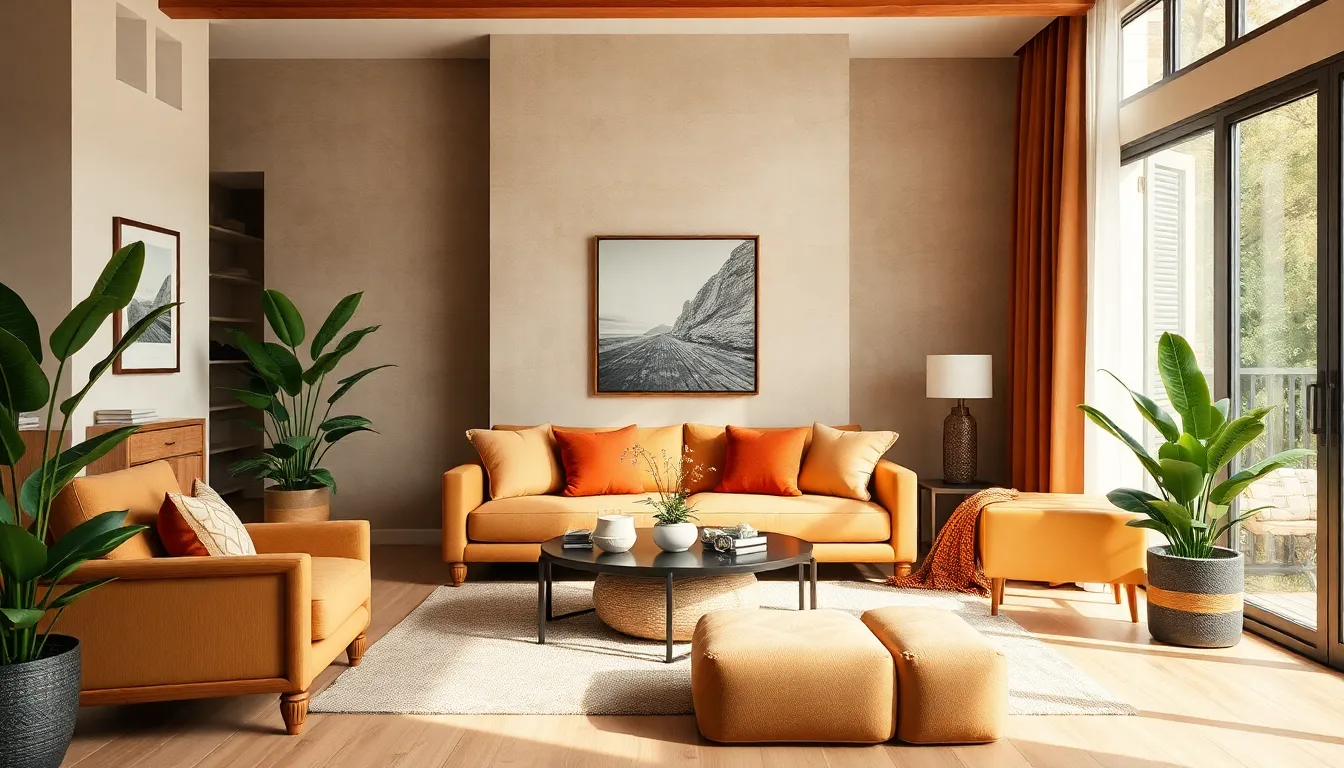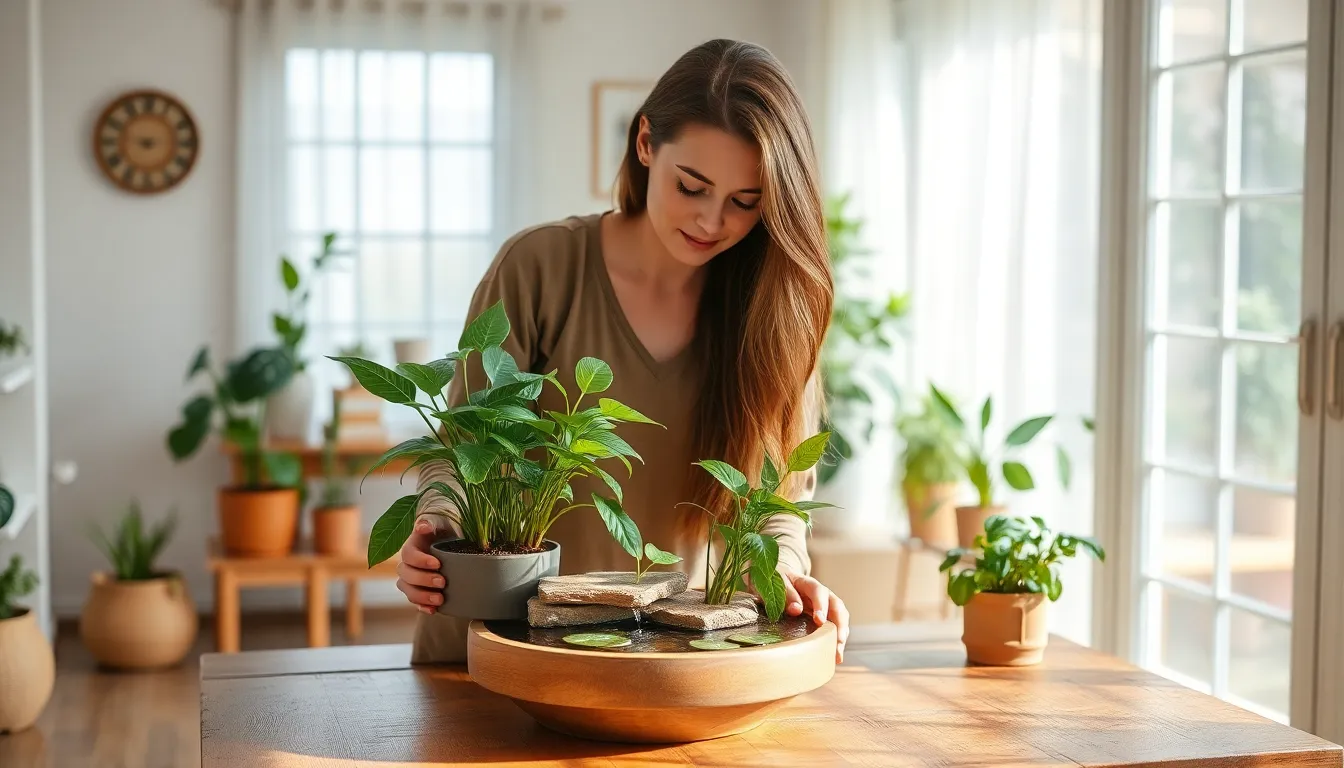In a world where urban living often feels cramped and chaotic, interior scapes offer a refreshing escape. These thoughtfully designed spaces transform the ordinary into the extraordinary, blending aesthetics with functionality. By incorporating nature, color, and innovative layouts, they create environments that nurture well-being and inspire creativity.
As people seek solace within their homes, the demand for unique interior scapes is on the rise. From lush greenery to minimalist designs, these spaces reflect personal style while enhancing the overall atmosphere. Understanding the principles behind effective interior scaping can empower anyone to elevate their living environment, making it a sanctuary that resonates with their personality and lifestyle.
Table of Contents
ToggleOverview of Interior Scapes
Interior scapes focus on creating tranquil, visually appealing environments that enhance the quality of life. These designs employ a thoughtful mix of natural elements, colors, and layouts to inspire calm and creativity. Incorporating plants, natural light, and sustainable materials fosters a connection to nature, which benefits mental well-being.
Key principles of effective interior scaping include:
- Natural Elements: Introducing plants and water features promotes relaxation and purifies indoor air.
- Color Palette: Selecting soothing colors enhances mood and defines the character of a space.
- Functional Layouts: Arranging furniture for optimal flow and utility maximizes both space and usability.
As more individuals prioritize comfort and personalization in their homes, the emphasis on unique interior designs continues to grow. Tailoring spaces to reflect personal style not only creates a sanctuary but also enhances everyday living experiences.
Key Elements of Interior Scapes

Key elements of interior scapes include color palettes, textures, and materials. These aspects contribute significantly to creating harmonious and inviting environments.
Color Palettes
Color palettes play a vital role in influencing mood and atmosphere. Choosing the right colors can evoke emotions and set the tone for a space. Soft, neutral shades promote tranquility, while bold hues can inspire energy and creativity. Popular combinations include earthy tones with greens and blues, which reflect nature and enhance relaxation. Accent colors can highlight specific features or furnishings, creating focal points within the design. Selecting color palettes based on personal preference and purpose of the space ensures a balanced and aesthetically pleasing environment.
Textures and Materials
Textures and materials add depth and character to interior scapes. Combining various textures—such as smooth surfaces with rough elements—creates visual interest and tactile variety. Natural materials like wood, stone, and textiles bring warmth and authenticity to a space. Incorporating soft fabrics in upholstery and decorative accessories can enhance comfort. Metals and glass introduce a modern touch, providing contrast against softer elements. Choosing sustainable materials not only supports eco-friendliness but also contributes to a unique aesthetic. The thoughtful blend of textures and materials establishes a cohesive and inviting environment that resonates with individual style.
Benefits of Incorporating Interior Scapes
Incorporating interior scapes into living spaces confers multiple advantages, enhancing aesthetic enjoyment and psychological well-being. The thoughtful design of such environments fosters a connection with nature and promotes tranquility in daily life.
Aesthetic Appeal
Interior scapes offer significant aesthetic enhancements, creating visually stunning environments. Incorporating plants, water features, and unique materials can transform a space dramatically. Natural elements add vibrancy and warmth, making interiors feel inviting. Color palettes play a critical role, with harmonious combinations enhancing the overall design. The integration of textures works to create depth, resulting in a rich sensory experience that captivates the eye. Artful arrangements of furniture and decor draw attention to focal points, enriching the visual landscape.
Psychological Impact
Interior scapes greatly influence psychological well-being. Surrounding oneself with nature has proven benefits, including reduced stress and increased feelings of relaxation. Integrating plants helps improve air quality, fostering a healthier living environment. Colors impact mood significantly; for example, soft tones promote calmness, while warmer hues can evoke energy and creativity. A well-designed interior can enhance focus and productivity, serving as a functional sanctuary that encourages positive mental states. By thoughtfully combining elements, individuals create spaces that nurture emotional health and inspire creativity.
Popular Interior Scapes Styles
Various interior scapes styles provide unique methods for creating serene environments. Among the most popular are the minimalist approach and maximalist design.
Minimalist Approach
The minimalist approach emphasizes simplicity and functionality. This style incorporates clean lines, neutral color palettes, and a limited selection of furnishings. Desirable features include:
- Natural Light: Large windows allow sunlight to fill spaces, promoting openness and warmth.
- Functional Furniture: Multi-purpose furniture reduces clutter while enhancing usability.
- Sparse Decor: Minimal decorative items maintain serenity and focus on essential elements.
This style creates a calm, uncluttered atmosphere, enabling clarity and peace.
Maximalist Design
Maximalist design celebrates abundance and personal expression. It features bold colors, diverse textures, and eclectic furnishings. Key characteristics include:
- Vibrant Color Schemes: Rich hues combined with contrasting patterns energize spaces and stimulate creativity.
- Layered Textures: Mixing textiles, such as velvet and wool, adds depth and intrigue.
- Eclectic Decor: Unique art pieces, statement furniture, and varied decor showcase individual style and interests.
Maximalism invites emotional engagement, creating vibrant, dynamic environments that inspire energy and creativity.
Interior scapes are more than just a design trend; they represent a shift towards creating personal sanctuaries within urban environments. By blending natural elements with thoughtful layouts and color palettes, individuals can transform their spaces into havens of tranquility and inspiration.
As the demand for unique designs grows, understanding the principles of interior scaping becomes essential. Whether opting for a minimalist or maximalist approach, each style offers distinct advantages that cater to personal tastes and lifestyles.
Ultimately, embracing interior scapes not only enhances the aesthetic appeal of a home but also promotes emotional well-being and creativity. These carefully curated environments serve as a reminder that home is where comfort and inspiration coexist.




